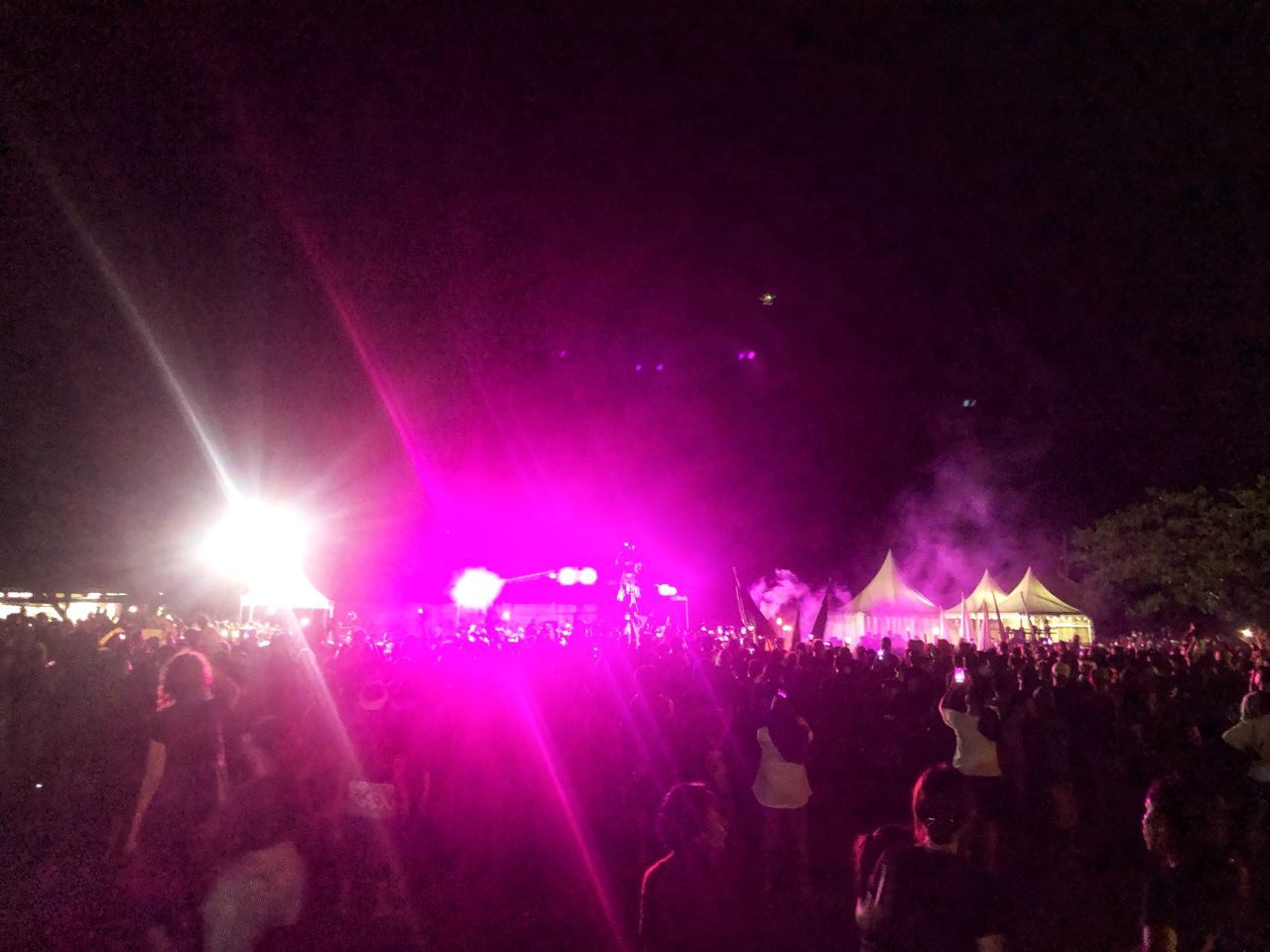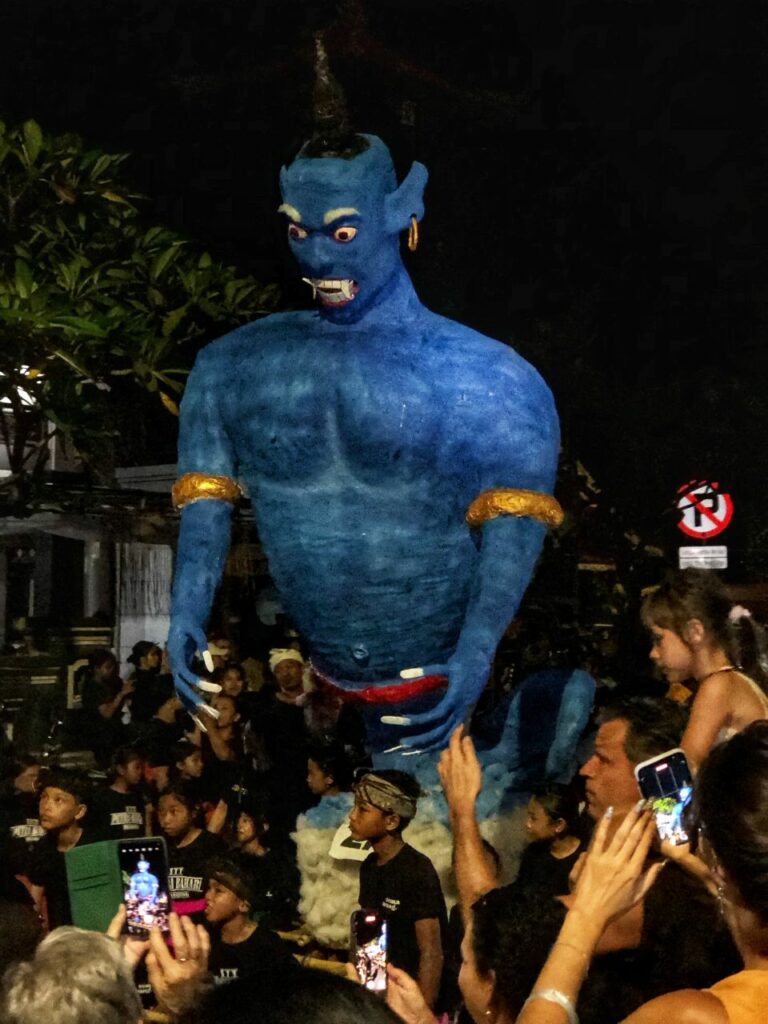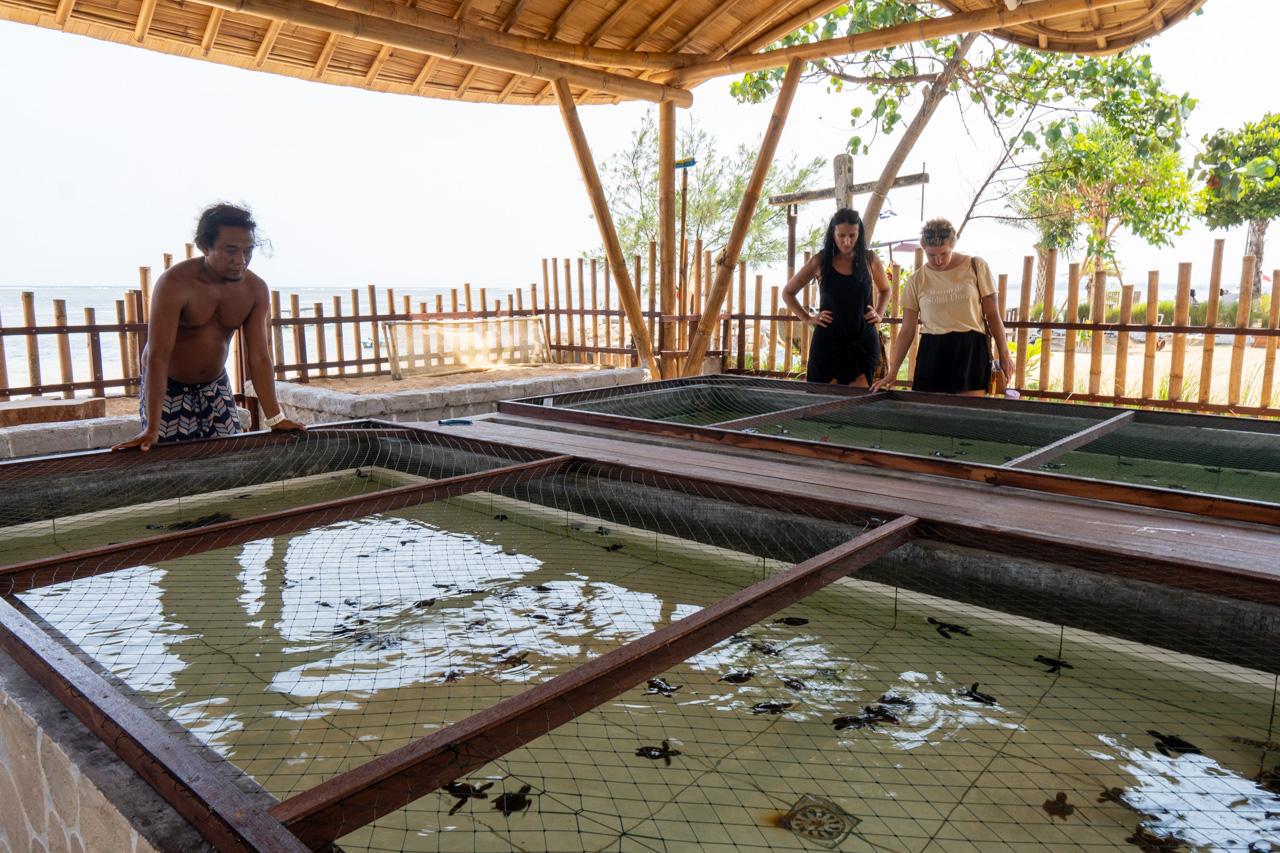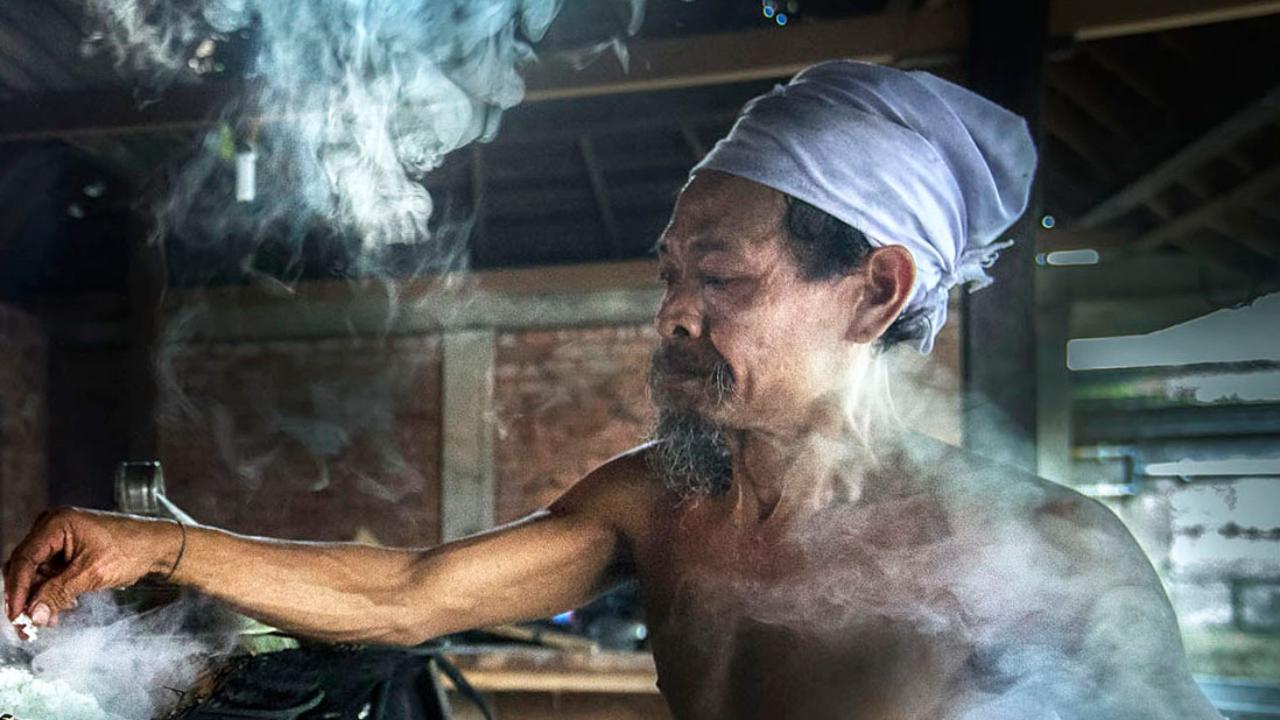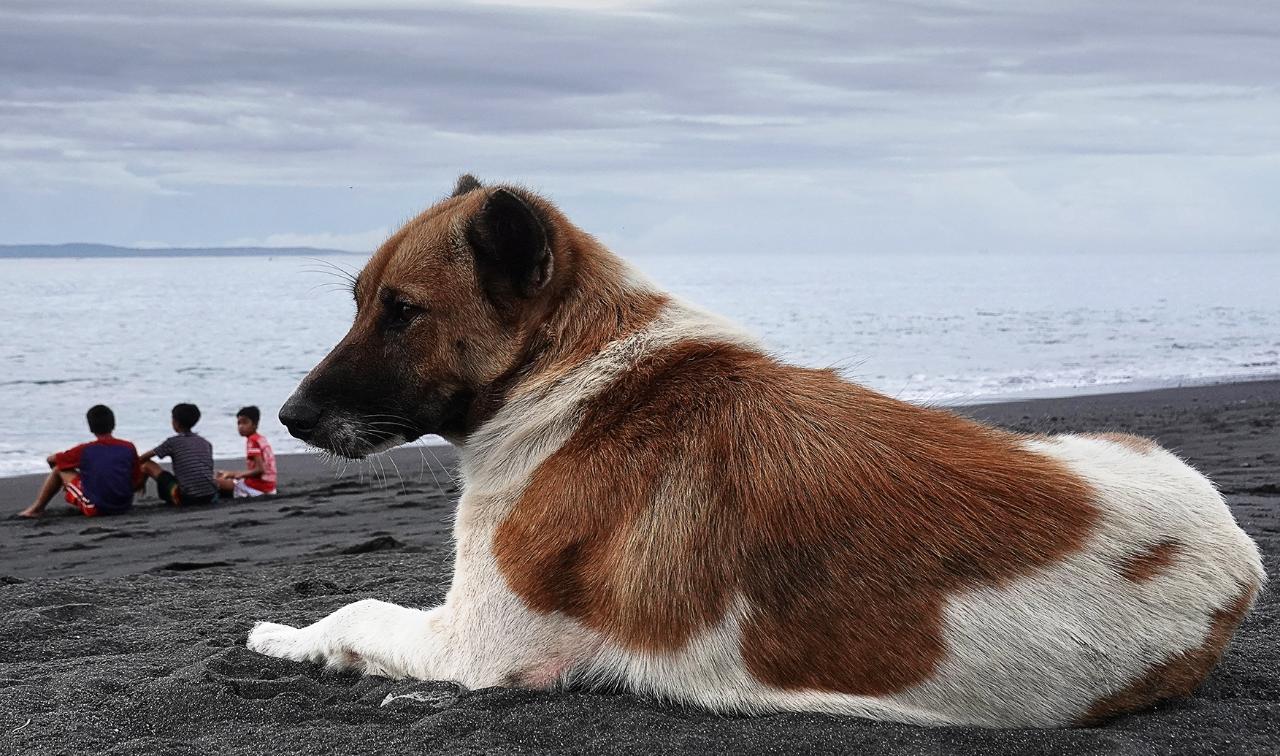Approaching Nyepi or the day of silence, the Balinese Hindu undergo a number of rituals which are an attempt to purify themselves and their surroundings. This starts with self-purification (melukat ritual) and then cleansing of temple worship equipment (melasti ceremony). Then, a day before Nyepi, a ritual to dispel negative elements (Bhuta Kala) in human life is performed.
The ceremony of dispelling Bhuta Kala is called Bhuta Yadnya – and it consists of two stages. The first is presenting various offerings (mecaru) to the Bhuta Kala. And then, expelling the Bhuta Kala from around the house, the garden and the surrounding environment (ngrupuk). At this time in the late afternoon, you may find a group of children circling their houses while hitting objects that generate loud noise, spreading rice, and carrying torches to scare away demons, or negative elements (Bhuta Kala).
The Ogoh-ogoh festival is part of this ngrupuk ceremony. The Ogoh-ogoh is a giant creature usually made with bamboo frames and then covered with paper mache to produce the desired shape. These days, many ogoh-ogoh are made by using Styrofoam to produce a smoother three-dimensional shape. Ogoh-ogoh symbolize the negative elements, vices and evil that surround human life – so it goes without question that these creatures appear as intimidating and menacing monsters. Throughout the festival you will see young people proudly carrying these monstrous creatures upon their shoulders in the street parade.
Teenagers generally want their ogoh-ogoh to be superior to ogoh-ogoh from other places, and this motivates them to express their creativity and imagination even more. The process of making ogoh-ogoh is welcomed with a great enthusiasm especially when it involves a form of competition and a winning prize. The competition committee will set criteria such as:
- The ogoh-ogoh appearance must represent the set theme.
- Harmony between the appearance, the story, the dance and the percussion.
- Perform a ceremonial procession prior to the festival, cleansing the ogoh-ogoh from negative influences, and praying for the safety of all.
Local elders or pecalang will give direction and supervision to maintain order during the street parade, promoting appropriate behaviour, with no firecrackers allowed, and respectful of all who have come to participate or watch.
After Nyepi, the ogoh-ogoh will be destroyed as a sign of wiping out all bad things and evil in the world. Starting with prayers and offerings, the ogoh-ogoh will be burned and their ashes thrown into the sea or river.
